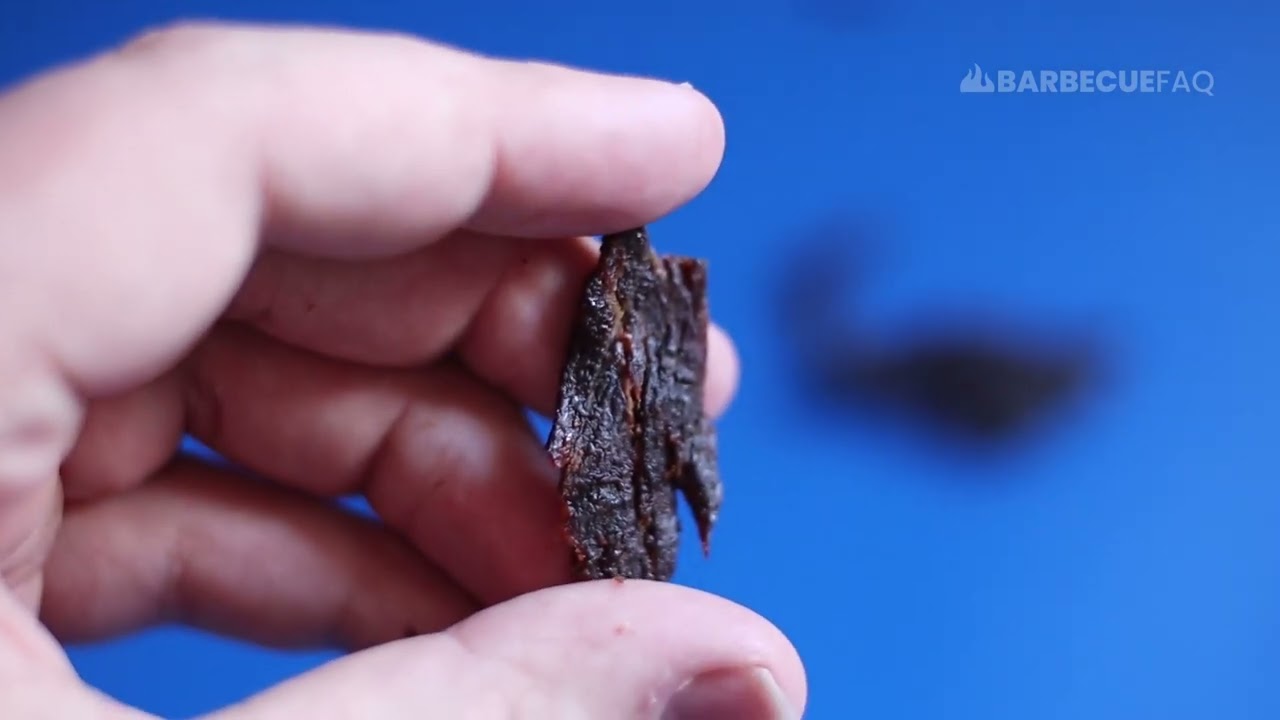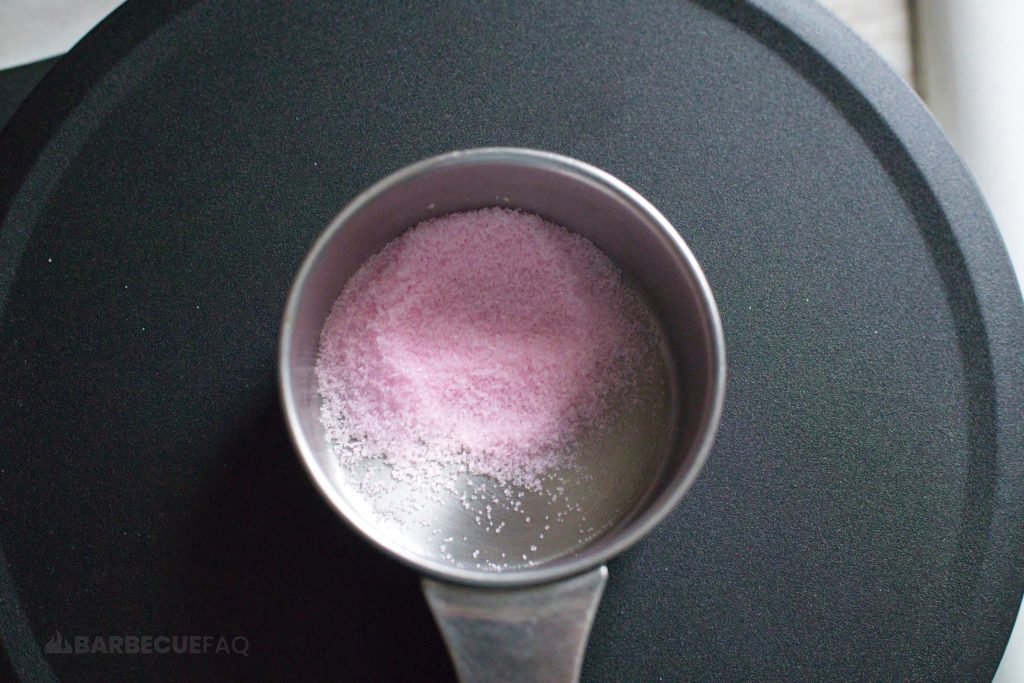When you suspect your jerky is done – after at least 3 hours – take a piece out of your dehydrator and allow it to cool at room temperature for 5-10 minutes.
Once cooled, bend it.
If the jerky is “done” it will have a distinct spider webbing at the tear/bend.
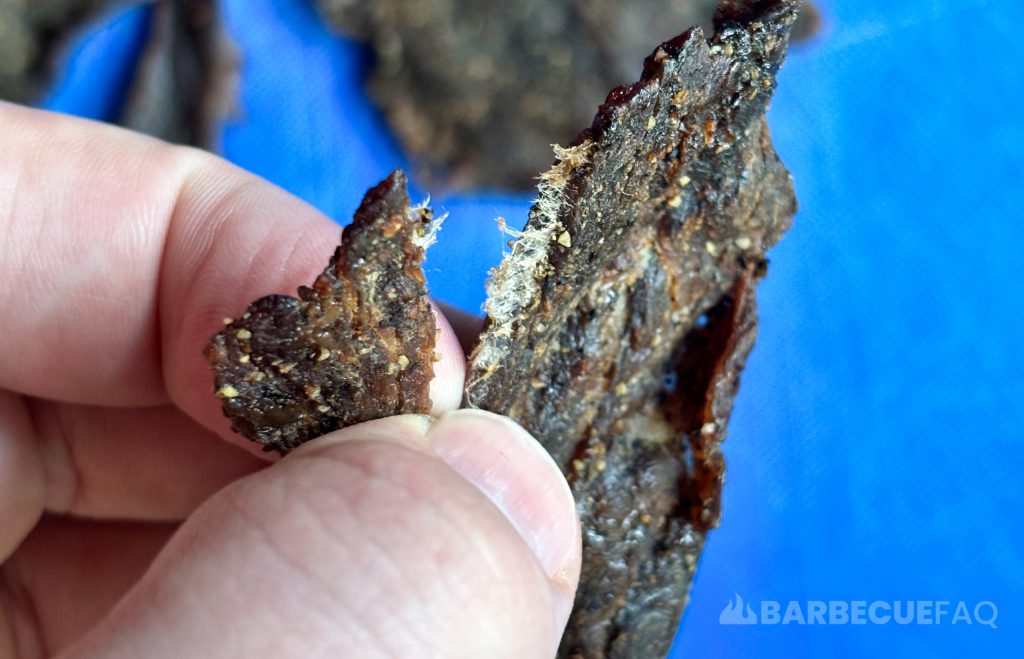
Jerky that isn’t done will feel like rubber bands and have hues of pink and purple at the bend.
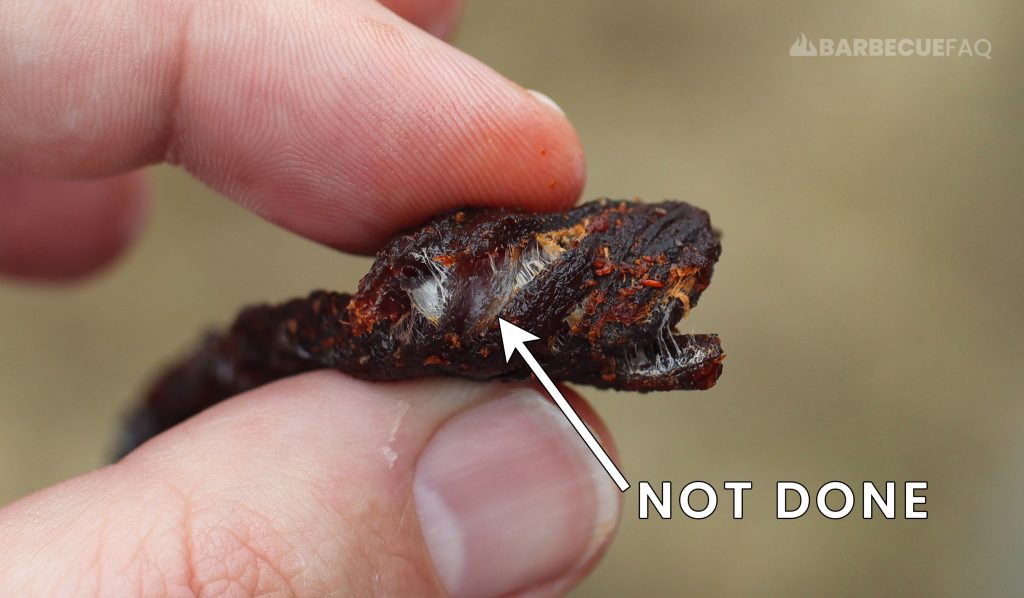
What About Other Visual Queues?
Externally, jerky can look the same when it’s finished and not finished.
This is even further complicated if you’re smoking the meat as the hardwood smoke will darken the meat.
Aside from bend testing jerky, there are a few other key indicators:
Jerky that’s done will be able to be torn in half but not snap – it also shouldn’t feel rubbery. The outside should have a somewhat dry, leathery appearance.
Here’s an example of what I mean by rubbery:

When bending the jerky above, there are no tears/spider webbing, and it feels like rubber bands.
In terms of the outside of the meat:
The outside appearance of the jerky can change based on what you used in your marinade.
Jerky that’s “wet” on the outside is a pretty good indicator that it’s not done.
Don’t confuse the grease that may be on the outside for “wetness” though. This is completely normal as the intramuscular fat renders.
This is especially pronounced right after taking the meat out of the dehydrator (below).
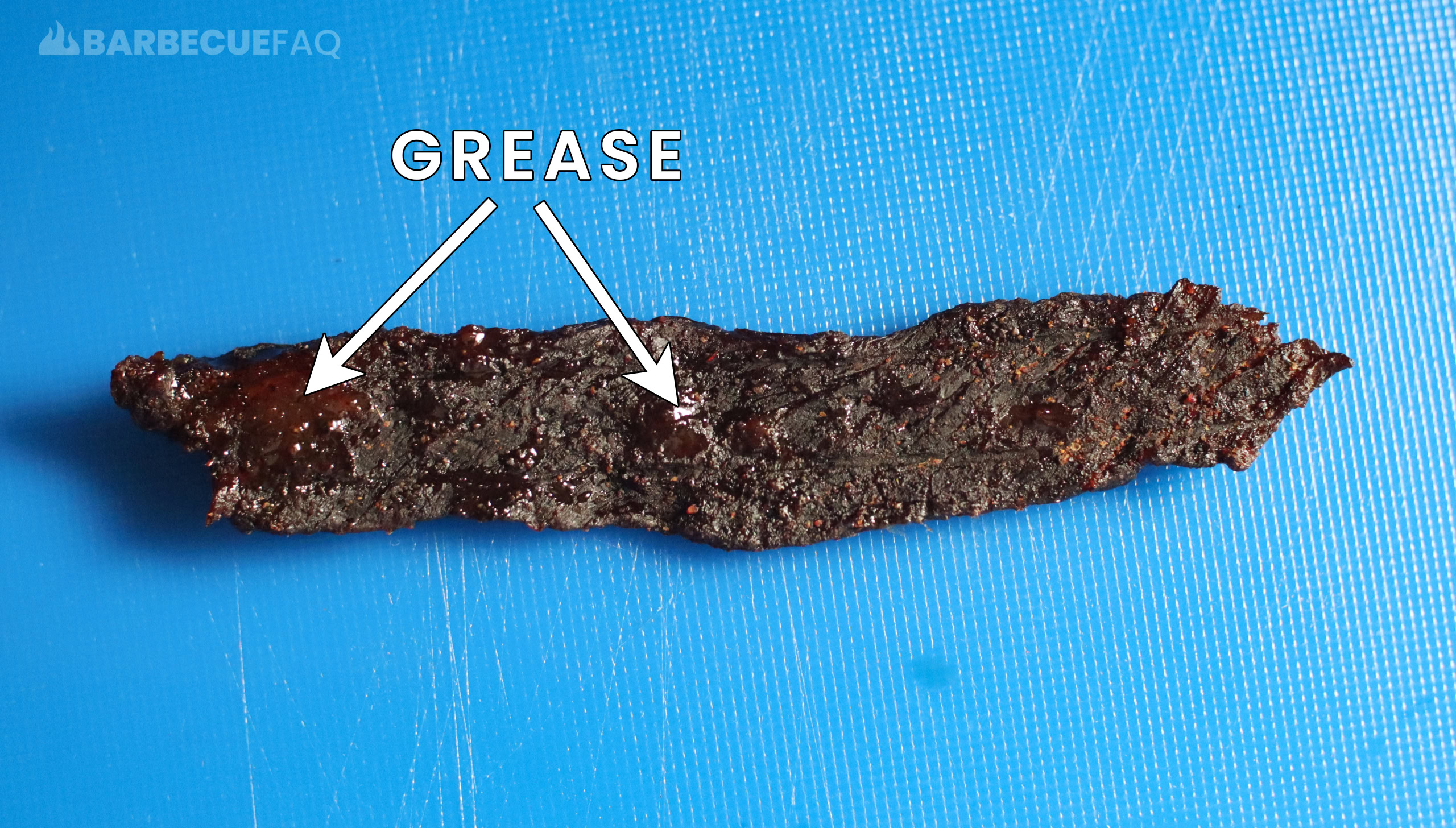
This is just another reason that lean cuts of meat are best.
What About Time?
This is heavily dependent on how thick you cut the jerky.
In most cases, jerky that is sliced to between 1/8″ – 1/4″ thick will take 3-5 hours to completely dehydrate.
How to Tell if You “Overdid it” and Your Jerky is Too Dry
Overdone jerky is somewhat brittle to the touch and bending may even result in a violent “snap.”
While this jerky is technically still edible, it’s way less palatable.
For the sake of completeness, I overdried a piece of jerky for this article.
Here’s a picture of said jerky:
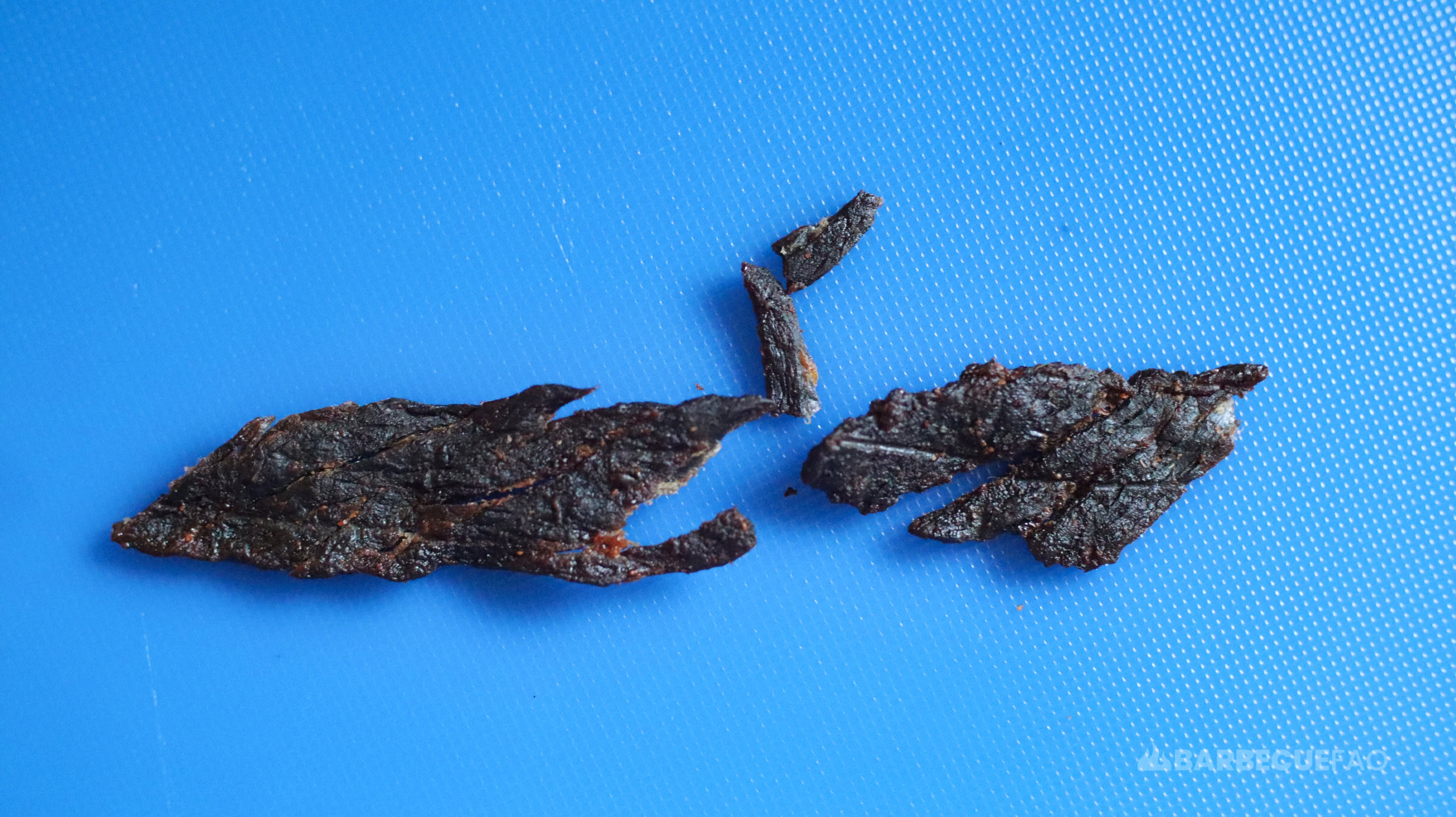
I also recorded a video because demonstrating “Dryness” in a photo is pretty hard.
The above jerky was dried for over 15 hours.
While it’s still completely edible (I ate the jerky after the video), it’s not super appetizing.
Nerdy Stuff Regarding Regarding Safe Consumption Temperatures – Ignore if you Don’t Care
Aside from visual queues for “doneness”, internal temperature is cause for concern for home jerky makers (especially those that are immunocompromised).
In terms of safety recommendations, the USDA states:
“The USDA Meat and Poultry Hotline’s current recommendation for making jerky safely is to heat meat to 160 °F and poultry to 165 °F before the dehydrating process. This step assures that any bacteria present will be destroyed by wet heat.”
USDA.gov
If we look at the FSIS Critical Parameters for Cooking, some of the most important factors for pathogenic log reductions are Come-up-time (CUT) and time/temperature combinations.
The table below is cited from the FSIS/USDA Website and is modified for brevity to only include the 7-log10 lethality and degrees Fahrenheit columns; It’s also condensed to include even-values.
If you’d like the full table, you can find it by clicking here and navigating to page 34.
| Degrees Fahrenheit | 7-log10 Lethality |
|---|---|
| 130 | 121 min. |
| 132 | 77 min. |
| 134 | 47 min. |
| 136 | 32 min. |
| 138 | 19 min. |
| 140 | 12 min. |
| 142 | 8 min. |
| 144 | 5 min. |
| 146 | 182 sec. |
| 148 | 115 sec. |
| 150 | 72 sec. |
| 152 | 46 sec. |
| 154 | 29 sec. |
| 155 | 23 sec. |
| 156 | 19 sec. |
| 157 | 15 sec. |
| 158 | 0 sec. |
| 159 | 0 sec. |
| 160 | 0 sec. |
From the chart above, we can see that at 158F, the necessary log reductions are achieved instantly.
I’m assuming the reason the USDA uses 160F is likely just because it’s easier for People to remember.
The above is troublesome for a couple of reasons:
- Probing jerky meat is difficult.
- Most, if not all commercial dehydrators are incapable of reaching 160F*.
*I genuinely mean that second point too. I’ve tested so many dehydrators and most – for a lack of a better word – suck; By suck I mean they can’t reach the temperatures they state.
It’s also worth noting that a big issue with jerky itself is that the goal for a lot of people is to emulate the way in which commercial jerky is made – which in and of itself is difficult.
Jerky is heavily regulated and the documentation for it is hard to understand.
Something the USDA has spelled out in plain English though is 160F internal. Upon digging deeper into the FSIS documentation we can see that’s actually 158F.
Most Commercial Dehydrators are Terrible and Can’t Reach 160F Ambient Temperature
Another issue with this internal temperature is that most commercial dehydrators are incapable of reaching 158F; Meaning, there’s no way for the jerky to reach 158F.
To sus this problem:
Set your oven to 350F, and heat treat the jerky for 10 minutes.
I also place the jerky on oven safe cooking racks; Meaning it’s elevated and not directly on a baking sheet (to avoid case hardening).
This is pictured below:
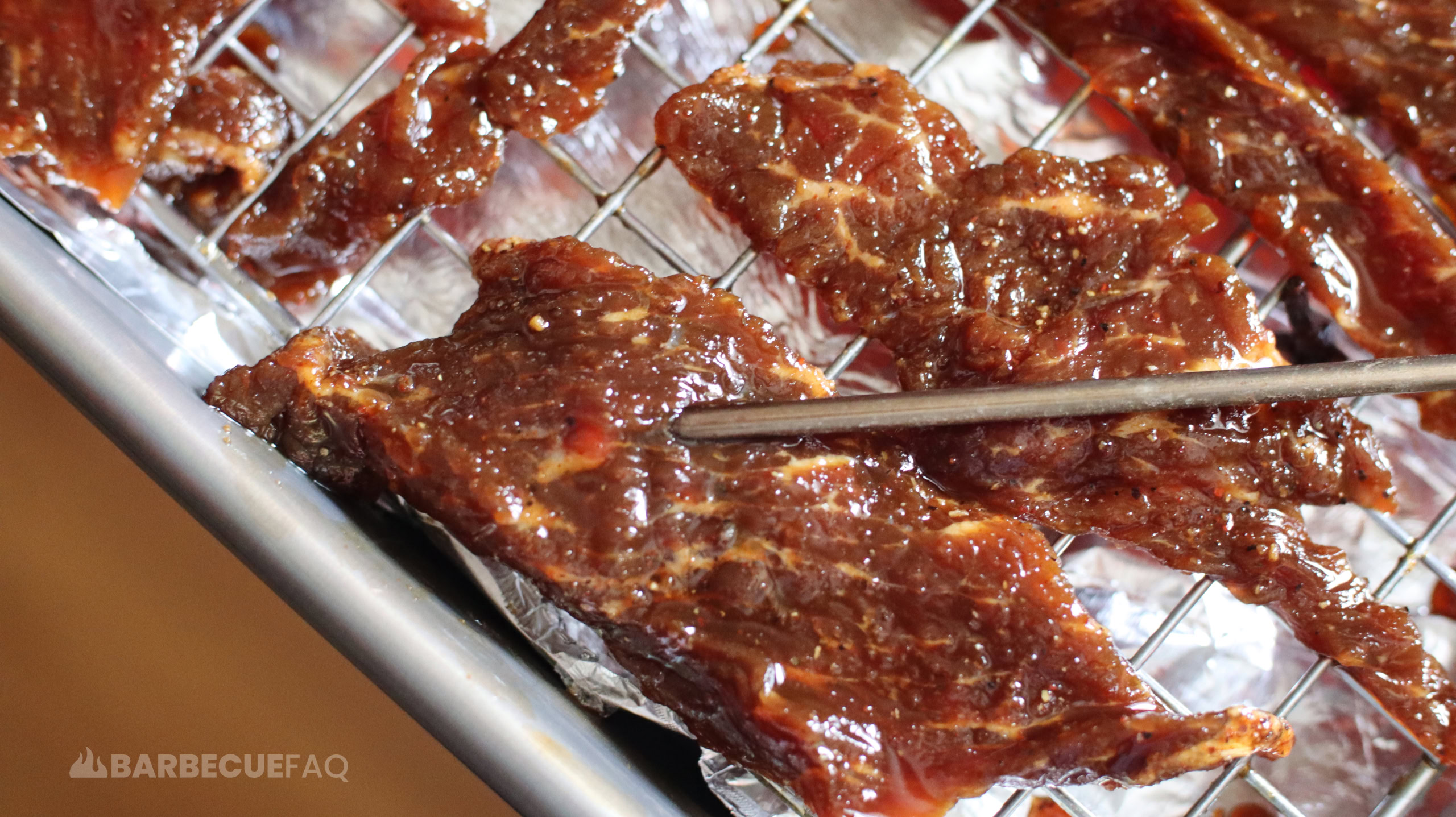
After the thickest piece reaches 158F I’ll transfer it to my Dehydrator set to 130F.
Going lower results in much softer jerky too.
The dehydrator I use is actually capable of reaching the temperatures it states too (between 96 – 194F). I’ve personally tested every single pre-set temperature using ambient temperature probes and the swing is roughly +/-2.5F.
Even in my case, I’d still rather apply the oven pre-heat treatment.
Also if you’re worried about a loss in perceivable “quality” due to the above heat treatment – there’s literally no difference in taste.
I know because I’ve tested both.


